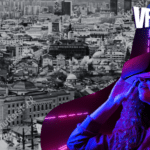- Homepage
- Explore tours
BEST TOUR PROVIDER IN SARAJEVO
Tour categories
- Corporate tours
- Blogs & Inspiration
- Our guides
- Contact
Adding item to wishlist requires an account
Don't have an account? Create one.
Shot that Changed the World Tour | Gavrilo Princip
- Duration: 3 hours
- Max people: 8
- Pickup: Sarajevo
- Min age: 0+
- Difficulty: Medium
- Drop-off: Sarajevo
What to expect from Gavrilo Princip tour
Shot that changed the world
Shot that Changed the World tour is dedicated to two bullets fired in a Sarajevo street on a sunny June morning in 1914 set in motion a series of events that shaped the world we live in today.
The assassination of Archduke Franz Ferdinand, nephew of Emperor Franz Josef and heir to the Austro-Hungarian Empire, is known as the central event that caused World War I.
In order to better understand the political climate which was prevalent in Europe in 1914 and the reasons why the First World War started, as well as how the Sarajevo Assassination happened and changed the course of the World map back then, we designed a Shot that Changed the World Tour.
You will see the most important sites related to the Austro-Hungarian period in Bosnia and Herzegovina and the assassination of the archduke itself and you will find out how the empire’s rule impacted Bosnian society back at that time.
Gavrilo Princip tour highlights
- Find out more about Sarajevo Assassination and start of WW1
- Visit Sarajevo City Hall
- See famous Latin Bridge
- Stand at the place of assassination
- Visit Sarajevo Museum and learn more about Gavrilo Princip
- Psss through Appel Quay - the route of Franc Ferdinand on the fatal day
- See the Chappel of Gavrilo Princip
- Stand at Hotel Austria & Bosnia where archduce Ferdinand stayed
- Discover where Gavrilo Princip's Statuee is located
Gavrilo Princip tour essential information
- Departure & return locationGazi Husrev Begova 75 (Click to get directions)
- Departure time09:00 AM AND 12:00 PM
- What's includedProfessional Tour Guide Transportation in a modern, AC-equipeed vehicle
Hotel pick-up
Hotel drop-off
Entrance fee for Sarajevo Museum
Free Cancellation 24hr prior - No charge - What's NOT includedPrivate expenses
Additional food & drinks
Entrance to City Hall - Good to knowA private tour can be organized on request
Tour can be customized on request
Price depends on number of people
Minimum required number of people for the tour is 2 - a private tour can be organized for 1 person
Gavrilo Princip tour details
City Hall
Shot that Changed the World Tour in Sarajevo starts with a visit to Sarajevo City Hall – a beautiful Austro-Hungarian-era building still representing one of the most iconic symbols of our city.
This is the place where Archduke Franz Ferdinand and his wife Sophie should have been hosted by Sarajevo’s major. Franz Ferdinand decided to visit Sarajevo, the capital of Bosnia and Herzegovina. to inspect the imperial armed forces in Bosnia and Herzegovina, former Ottoman territories in the turbulent Balkan region that were annexed by Austria-Hungary.
The date scheduled for his visit, June 28, coincided with the anniversary of the First Battle of Kosovo in 1389 in which medieval Serbia was defeated by the Turks. On the same date was Franz Ferdinand’s wedding anniversary. For the first time in her married life, Sophie (also known as the Duchess of Hohenberg) is accompanying her husband on a state visit.
Latin Bridge -Site of Assassination and Sarajevo Museum
Before getting to the topic of the assassination itself, we will explain the political and social situation in Bosnia and other Southern Slavic countries during the period of Austro-Hungarian rule.
We will talk about “Black Hand”, a secret Serbian society of the early 20th century that used terrorist methods to promote the liberation of Serbs outside Serbia from Habsburg or Ottoman rule and was instrumental in planning the assassination.
Another secret movement founded in Bosnia and related to Black Hand – “Young Bosnia” will be the topic of discussion. When it was announced that Franz Ferdinand will be visiting Sarajevo the two organisations decided to assassinate him.
You will hear the complete story about the first, failed attempt of the assassination. Then we will talk about the event when 19-year-old Gavrilo Princip seized his opportunity after a wrong turn Ferdinand’s driver took.
He stepped forward and fired two shots. The first shot hit pregnant Sophia in the stomach, she died almost instantly. The second shot hit the Archduke in the neck. He died a short while later.
Your guide will explain to you how the assassination of Franz-Ferdinand and Sophie set off a rapid chain of events and how WW1 started.
This part of the tour we will make more complete by visiting Sarajevo Museum where everything you fill finds is dedicated to the life in Bosnia during the Austro-Hungarian rule, the assassination of the archduke Ferdinand and the start of World War 1.
Appel Quay, Gavrilo Princip’s Chapel and Hotel Austria
After explaining the events that led to the assassination and those that have been the consequences of it, we will be passing by car through the avenue that was Franz Ferdinand’s route on a fatal day.
We will see the Chapel of Gavrilo Princip, the assassin of the archduke and his wife, where he and other members of the secret organisation were buried.
Later on, we continue to Hotel Austria & Bosna where the archduke stayed with his wife in Sarajevo. From this hotel, he started his journey to death.
Statue of Gavrilo Princip
The next destination will be the Statue of Gavrilo Princip located in East Sarajevo, a municipality that belongs to the Republic of Srpska area. Do not be surprised when you realise how different perceptions of Gavrilo Princip and of what he did exist in Bosnia and the whole region of the Balkans.
Gavrilo Princip tour photos
You might also like
Sarajevo Free Walking Tour | Every Day at 10:30 AM & 3 PM
Anja
Amazing experience 🤩 Our guide, Ago, made those 3 hours interesting, funny, sad and surprising all together. He left us with appetite to find out more about Sarajevo and its history. Highly recommend☺️
Luizz9
The tour was really great and our guide was really knowledgeable and friendly, would definitely recommend to anyone traveling to Sarajevo. He even went for a few drinks with us later that night and we had a great evening.
calista
Fantastic tour with an exceptionally excellent guide. Adnan knew how to make a very complicated history a little more understandable. A dark chapter was personalized for us in a very moving way.
greta
Was an excellent tour that was very informative with information clarified very well. We were also taken to very good locations.
Martha
Very friendly shop to go to for your tour in Sarajevo. Our guide Arna is very nice lady with a lot of knowledge. If you like a tour with a personal touch, definitely book at this shop.





